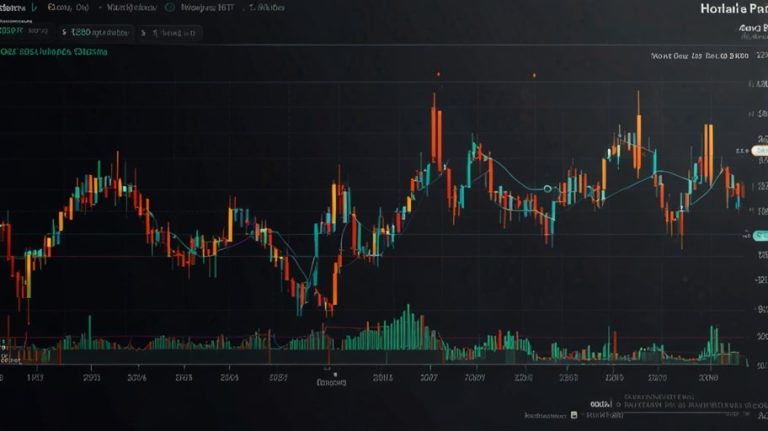Understanding Your Home’s Insurance Risk Profile Without the Guesswork
No one wants to pay more for insurance than they have to. Your home insurance risk profile plays a big role in determining what those costs look like from the start.
Every property is judged based on how risky it appears to insurance providers. The more risk involved, the higher the home insurance premiums. Sounds simple, but there’s a long list of variables involved. And missing even one detail could lead to higher premiums—or worse, limited coverage options.
Why Risk Profiles Matter
Insurance companies don’t operate on gut feelings. They use statistical models, historical data, and risk assessment methods to predict the likelihood of insured losses. Your home’s risk level, location, claims history, and even your credit history feed into this evaluation.
A poor insurance risk assessment leads to being classified as a high risk homeowner. That doesn’t just affect your monthly payments. It shapes the kind of coverage you’re offered—if you’re offered any at all.
Factors That Shape Your Risk Profile
Insurance isn’t only about where you live. It’s about how you live, too.
Property location ranks high. Homes in flood zones, wildfire-prone areas, or regions with frequent natural disasters automatically raise red flags. That zip code bump might seem minor, but it’s enough to push a home into the high risk home insurance bracket.
Construction materials matter as well. Outdated wiring or aging plumbing systems increase fire and water damage risks. Homes built with materials no longer up to modern safety codes also receive higher risk ratings.
Home usage is another signal. Properties used as rentals or vacation homes usually receive higher premiums. Regular occupancy means quicker detection of issues. Vacant homes tend to suffer more damage before action is taken.
Safety Features Help—But Only If Documented
Most homeowners assume a smoke detector and a security system are enough. But safety features only improve your home insurance risk profile when they’re properly disclosed and regularly maintained.
Things like upgraded electrical systems, new plumbing, fire-resistant roofing, deadbolt locks, and monitored security alarms reduce risk. Insurance companies reward those measures with lower insurance premiums, but they require proof—so documentation matters.
Claims History Leaves a Trail
Every insurance claim you file is logged and reviewed during your next application or renewal. Multiple claims within a few years signal higher risk to underwriters. Whether it’s water damage or theft, frequent claims suggest patterns—and insurers don’t like patterns.
Even a single claim will raise home insurance costs if it’s related to damage from specific risks like mold or flooding, which often repeat without significant repairs.
Credit History and Missed Payments
Poor credit history is another red flag. Late payments or unpaid balances affect more than credit card interest—they push your risk level higher. Insurance companies consider those with unstable financial records more likely to file frequent claims or miss premium payments.
Paying bills on time doesn’t only protect your credit score. It also helps secure affordable home insurance over time.
Lifestyle and Daily Habits
Surprisingly, lifestyle choices shape how insurers see your home. Owning large pets, using wood-burning stoves, or running a home business may increase risks for personal liability or fire. Some providers consider those high risk behaviors, even if the rest of your insurance policy is clean.
Why Some Homes Are Deemed High Risk
A high risk property isn’t always a damaged or poorly maintained one. Some homes look great but sit in areas prone to frequent storms or fires. Others have had multiple claims in a short time.
Even a well-kept home may fall under high risk homeowners insurance due to surrounding crime rates, outdated infrastructure, or an unusual layout. Each of these adds complexity to your insurance risk assessment.
Choosing the Right Coverage
Finding the right coverage starts with understanding your own profile. Not all insurance options fit every home. Some providers specialize in high risk insurance, while others cater only to lower risk clients.
If your home falls outside of standard insurers, it’s better to work with an insurance broker who has access to niche markets. They offer tailored insurance plans that reflect your needs—even for homes that have been considered high risk in the past.
The Role of the Insurance Industry
The insurance industry constantly adapts to industry trends. From climate change to smarter homes, how insurers assess risk shifts regularly. Staying informed about home insurance market changes puts you in a stronger position to negotiate for affordable coverage.
Reviewing your insurance policy annually, especially after upgrades or renovations, gives you leverage. Each improvement could push your risk profile from higher premiums toward more affordable options.
Security Measures That Make a Difference
Insurance providers take note of upgrades. Smoke detectors, motion lights, reinforced doors, water sensors, and surveillance cameras reduce risk. Even landscaping will help—trimming back trees away from roofing and gutters prevents storm damage.
Better protection leads to lower premiums. The key is to show you’re proactive in reducing risk and preventing potential losses.
Review, Adjust, Repeat
Homeowners who regularly review their coverage and keep up with safety updates often avoid the worst premium hikes. Rebuilding cost estimates should be updated yearly to avoid underinsurance.
If you’re unsure how your home insurance risk profile stands, ask for a risk review. An experienced agent or insurance broker may assess various factors and help you make informed decisions based on your property’s exact needs.
The Takeaway
Few people consider how their daily choices impact coverage. Your home insurance risk profile holds the power to shape your premiums, eligibility, and long-term protection. Working with insurance providers who understand the nuances of high risk homeowners insurance will mean the difference between full protection or limited coverage options.
Homeowners with specific risk factors should always stay informed, work with the right professionals, and take action to reduce exposure over time. The right approach doesn’t guarantee savings—but it gives you a far better shot at affordable home insurance and reliable coverage for your most valuable asset.
Frequently Asked Questions
How is home insurance different from health insurance?
Home insurance protects your property and belongings, while health insurance covers medical expenses and treatment.
What does insurance coverage mean in a home policy?
Insurance coverage refers to the specific protections and financial limits included in your home insurance plan.
Why do coverage limits matter?
Coverage limits set the maximum amount your insurer will pay for damage or loss, which can impact your out-of-pocket costs.
When should I consider additional coverage?
You should look into additional coverage if your home includes high-value items, unique risks, or recent upgrades.












 Bitcoin
Bitcoin  Ethereum
Ethereum  Tether
Tether  XRP
XRP  Wrapped SOL
Wrapped SOL  USDC
USDC  Lido Staked Ether
Lido Staked Ether  TRON
TRON  Cardano
Cardano  Avalanche
Avalanche  Toncoin
Toncoin